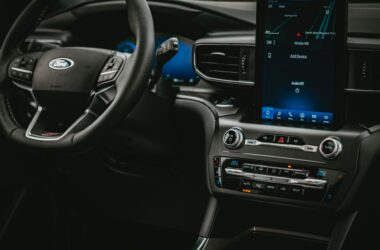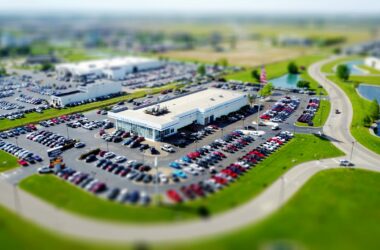Over winter break, we took a road trip from the Bay Area down to Death Valley National Park and the Vegas + LA metro areas for a week. As I traded a gas-powered Volvo XC90 for a Tesla Model X at the end of 2021, it was an EV drive in the biggest national park in the contiguous United States, one where landmarks within the park are typically 30+ minutes apart from each other by car and sites with running water & electricity are spread further still. With almost no cell phone reception and barren flats and hills, the National Park Service makes sure to remind visitors of travel safety since help is generally very far away.
I’m sad to say that the infrastructure for EVs, specifically charging, is still not there yet. Tesla’s supercharger network is the biggest one by far in the US, and there are still plenty of gaps in remote areas or freeways outside of the primary corridors which require planning. Certainly, compared to a few years ago, there are more publically available Level 2 chargers, but their slow charging speeds ended up dictating some parameters of the trip. Coupled with the reality that batteries lose efficiency in either cold or hot weather, and I felt that dreaded range anxiety1 for the first time since we’ve been driving Teslas 4–5 years ago.
Along the way, though, I was interested to see chargers from other companies pop up, often clustered around the same parking lots2. Electrify America and EVgo are the pure EV infrastructure companies, but there were also a couple of flashier charging clusters branded Rivian and Lucid. It sounds like Mercedes is about to enter the EV infrastructure game as well, announcing that they’re going to invest billions to build out their charging network, with a bent towards providing a “premium experience”—which mostly sounds like they want their chargers to be reliable.
I’ve given—and continue to give—Tesla a ton of credit for disrupting the norms of how the automotive industry works: everything from going directly to customers and bypassing dealerships; moving to over-the-air software updates; bootstrapping new automotive startups with high-end luxury vehicles to subsidize subsequent cars; emphasizing games as an evolution of in-car infotainment; and now building out semi-private charger networks to lock-in customers and reinforce the manufacturer’s brand. Enough is going on in cars that titans in other, tangentially-related industries are leveraging the breadth of automotive innovation to insert themselves in the conversation: see Sony and their just-announced Afeela brand and its initial sedan.
If these trends continue, I think we’ll see further verticalization of the car industry as manufacturers move to capture more of the profits in the market, as well as to differentiate themselves from each other in the face of increased competition. Dealerships are already in the process of getting disintermediated and bypassed in favor of direct-to-consumer sales; multiple charging networks managed by manufacturers will eventually replace independent gas stations. Some of the bigger car companies already have auto financing arms, and Tesla is experimenting with insurance as well. Then there’s setting up home charging and alternative sources of electrical generation, which Tesla also has an answer for with their acquisition of SolarCity3.
However, the impact on the consumer is that consolidation of all these services that revolve around the vehicle eventually leads to less competition, or at least, different competition. So instead of dealerships playing games with MSRPs, the manufacturer sets a single price—which then goes up and down based on supply chain issues and issuance of tax credits. Subscriptions4 are being rolled out right now, and all signs suggest that functionality will be further controlled piecemeal via DRM-esque unlocks, perhaps displacing some of the trim-level segmentation that we’re used to. Proprietary charger locations and features become reasons to pick one manufacturer over another5. Instead of dealerships competing for your business, gas stations competing for your fuel-up, and mechanics competing for your annual maintenance checks—all of it collapses onto a holistic vehicular service managed by your car maker. Choices between cars will more and more encompass all these disparate factors as a singular selection when they are currently more piecemeal but are also auxiliary and peripheral.
Or, another way to put it is that when you buy into a Tesla car, you also buy into its service centers and its charging network, and other car makers are racing to get there and more with their EV transitions. While the hype around autonomous driving has died down quite a bit, this shift in business model—going towards a bundled, vertical car-owning experience—admittedly grabs fewer headlines, but will just be as impactful to the consumer.
So much so that I started to count how many Teslas we were passing inside the park to estimate whether I’d have to fight for a charging spot.↩
I’ll venture a guess that it’s easier to hook up EV charging apparatus when someone else has already done the work to route high-voltage electricity to a location.↩
We did install a Tesla solar roof last year; I have a post on our experience with that project in my drafts folder.↩
I.e., services, in emulating tech industry norms.↩
Of course, this is already true of superchargers; everyone else is just trying to catch up.↩




